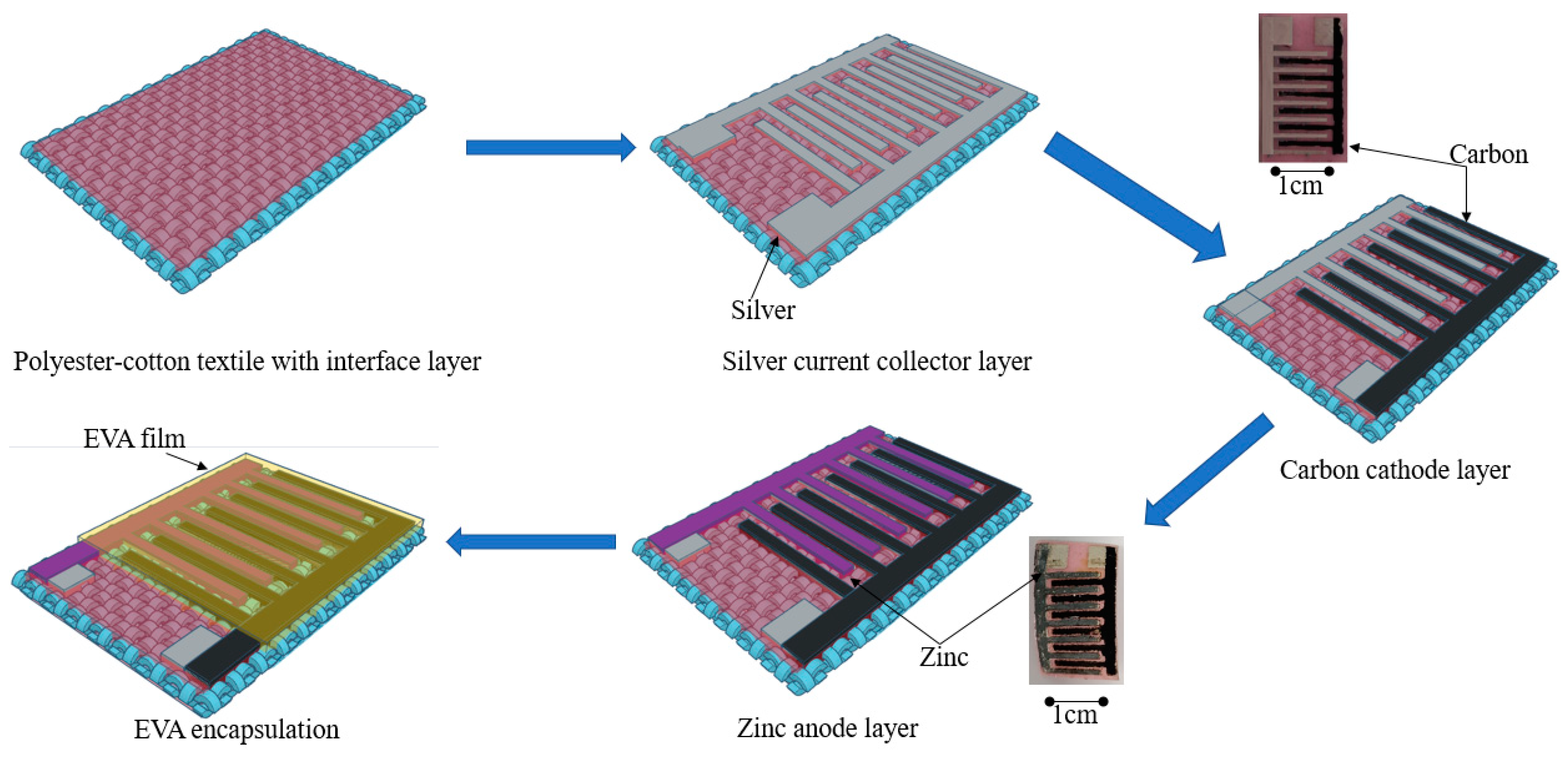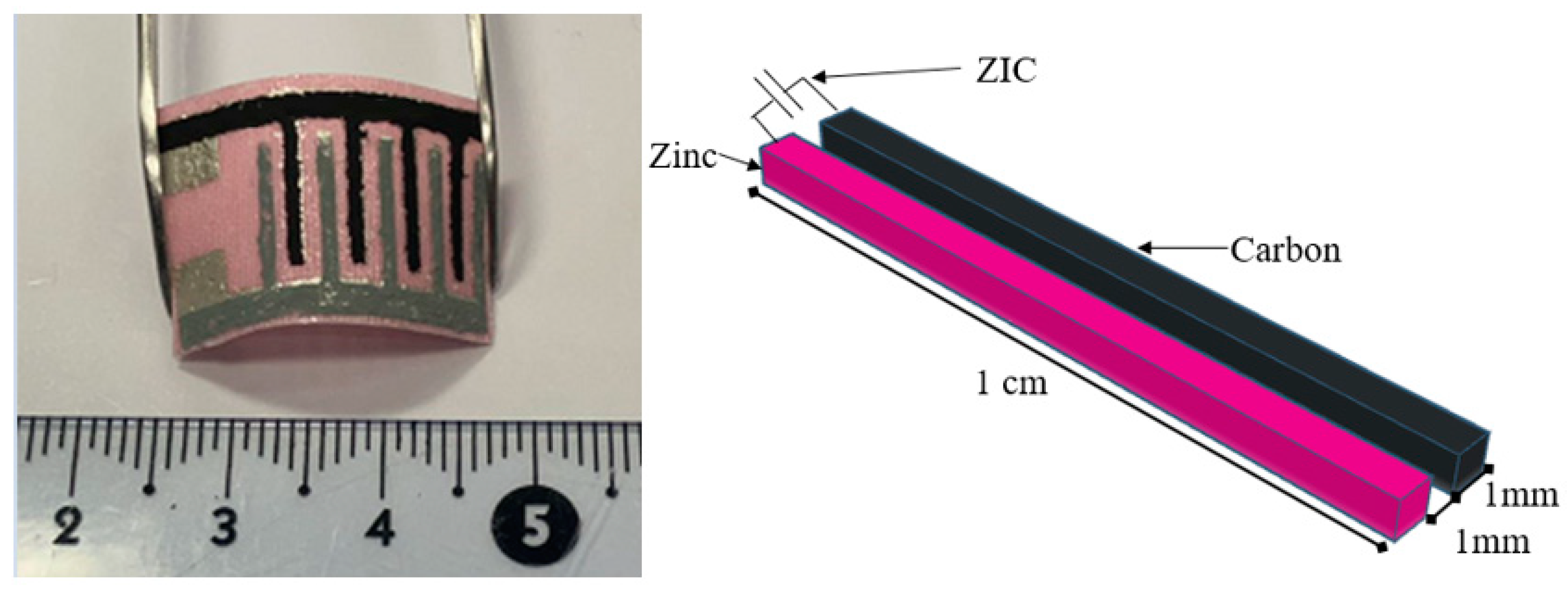A Textile Solid-State Zinc-Ion Capacitor †
Abstract
1. Introduction
2. Material and Fabrication Processes
3. Results
4. Conclusions
Author Contributions
Funding
Institutional Review Board Statement
Informed Consent Statement
Data Availability Statement
Conflicts of Interest
References
- Dias, T. Electronic Textiles Smart Fabrics and Wearable Technology; Woodhead Publishing: Sawston, UK, 2015. [Google Scholar]
- Tie, D.; Huang, S.F.; Wang, J.; Ma, J.M.; Zhang, J.J.; Zhao, Y.F. Hybrid energy storage devices: Advanced electrode materials and matching principles. Energy Storage Mater. 2019, 21, 22–40. [Google Scholar] [CrossRef]
- Gibertini, E.; Lissandrello, F.; Bertoli, L.; Viviani, P.; Magagnin, L. All-Inkjet-Printed Ti3C2 MXene Capacitor for Tex-tile Energy Storage. Coatings 2023, 13, 230. [Google Scholar] [CrossRef]
- Zeng, J.; Dong, L.; Sun, L.; Wang, W.; Zhou, Y.; Wei, L.; Guo, X. Printable Zinc-Ion Hybrid Micro-Capacitors for Flexible Self-Powered Integrated Units. Nano-Micro Lett. 2021, 13, 19. [Google Scholar] [CrossRef] [PubMed]
- Yong, S.; Li, Y.; Beeby, S. Flexible Textile Zinc Ion Supercapacitor. In Proceedings of the 2023 IEEE International Conference on Flexible and Printable Sensors and Systems (FLEPS), Boston, MA, USA, 9–12 July 2023; pp. 1–4. [Google Scholar]



Disclaimer/Publisher’s Note: The statements, opinions and data contained in all publications are solely those of the individual author(s) and contributor(s) and not of MDPI and/or the editor(s). MDPI and/or the editor(s) disclaim responsibility for any injury to people or property resulting from any ideas, methods, instructions or products referred to in the content. |
© 2024 by the authors. Licensee MDPI, Basel, Switzerland. This article is an open access article distributed under the terms and conditions of the Creative Commons Attribution (CC BY) license (https://creativecommons.org/licenses/by/4.0/).
Share and Cite
Yong, S.; Wei, W.; Beeby, S. A Textile Solid-State Zinc-Ion Capacitor. Eng. Proc. 2023, 52, 31. https://doi.org/10.3390/engproc2023052031
Yong S, Wei W, Beeby S. A Textile Solid-State Zinc-Ion Capacitor. Engineering Proceedings. 2023; 52(1):31. https://doi.org/10.3390/engproc2023052031
Chicago/Turabian StyleYong, Sheng, Wenli Wei, and Stephen Beeby. 2023. "A Textile Solid-State Zinc-Ion Capacitor" Engineering Proceedings 52, no. 1: 31. https://doi.org/10.3390/engproc2023052031
APA StyleYong, S., Wei, W., & Beeby, S. (2023). A Textile Solid-State Zinc-Ion Capacitor. Engineering Proceedings, 52(1), 31. https://doi.org/10.3390/engproc2023052031






